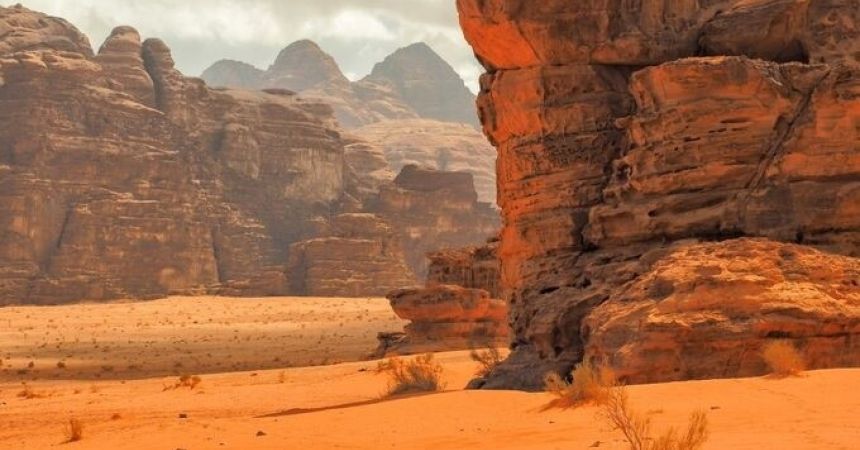
Petra Travel: Independent vs Guided Tours
Petra, often described as the "Rose-Red City" due to its stunning sandstone architecture, is one of the most iconic and mesmerizing archaeological sites in the world. Located in southern Jordan, Petra has captivated travelers for centuries with its elaborate rock-cut structures and fascinating history. As interest in visiting Petra grows, many travelers are asking: Can I explore Petra on my own, or should I consider a guided tour in Petra? This comprehensive guide will provide you with everything you need to know about visiting Petra independently, including practical tips, safety considerations, and the benefits of self-guided exploration.
Introduction to Petra
Petra, a UNESCO World Heritage Site, was once the thriving capital of the Nabataean Kingdom. It flourished as a major trading hub between the 4th century BC and the 2nd century AD. Today, Petra is renowned for its intricate rock-cut architecture, including the famous Treasury (Al-Khazneh), the Monastery (Ad-Deir), and the Royal Tombs. The city is spread over a vast area, with its most famous structures accessed through a dramatic gorge known as the Siq.
Can You Visit Petra on Your Own?
1.1 Yes, You Can Explore Petra Independently
Self-Guided Exploration: It is entirely possible to visit Petra on your own without a guided tour. The site is well-marked, and most visitors find that they can navigate it with a map or guidebook. However, whether you choose to go solo or with a guide depends on your preferences, interests, and travel style.
1.2 Benefits of Visiting Petra on Your Own
Flexibility: Visiting Petra independently allows you to set your own pace, spend as much time as you wish at each site, and explore off-the-beaten-path areas.
Cost: Self-guided tours can be more cost-effective compared to guided tours, which can include additional fees for the guide and group tours.
Personal Experience: You can create a more personalized experience, focusing on the aspects of Petra that interest you most.
1.3 Considerations Before Going Alone
Preparation: Make sure to prepare thoroughly by researching the site, understanding the layout, and planning your itinerary. Knowledge of Petra's history and key sites will enhance your visit.
Navigation: Petra covers a large area, and some parts involve significant walking and hiking. A good map or GPS can help you navigate.
Practical Tips for Visiting Petra on Your Own
2.1 Planning Your Visit
Tickets and Entry: Purchase your ticket in advance or at the entrance. Tickets are available for 1-day, 2-day, and 3-day visits. Prices vary based on the duration of your stay and whether you are a Jordanian or international visitor.
Opening Hours: Petra’s main entrance opens at 6 AM. Plan to arrive early to make the most of your visit and avoid the midday heat.
Seasonal Considerations: The best times to visit Petra are during the spring (March to May) and autumn (September to November) when temperatures are milder. Summer temperatures can be very high, which may affect your comfort during exploration.
2.2 Navigating Petra
Maps and Guides: Obtain a map of Petra from the visitor center or download one online before your trip. Detailed guidebooks are also available for purchase at the site.
Signage: Petra is generally well-signposted, with signs indicating major attractions and trails. However, the site is large, so keep an eye out for direction markers and be prepared to walk long distances.
Mobile Apps: Consider using mobile apps that provide maps and navigation assistance for Petra. These apps can enhance your experience by offering additional information and guiding you through the site.
2.3 Essentials to Bring
Comfortable Shoes: Wear sturdy walking shoes or hiking boots suitable for uneven terrain.
Water and Snacks: Carry sufficient water and snacks to keep hydrated and energized throughout the day.
Sun Protection: Bring sunscreen, a hat, and sunglasses to protect yourself from the sun, especially during the warmer months.
Camera: Don’t forget your camera or smartphone to capture the stunning views and architectural details.
2.4 Health and Safety
Physical Fitness: Be prepared for a fair amount of walking and hiking. Some trails involve steep climbs and uneven surfaces.
Emergency Contacts: Familiarize yourself with the location of first aid stations and the visitor center. Have emergency contact numbers handy in case of any issues.
Local Guidelines: Follow any local guidelines or regulations to ensure a safe and respectful visit.
Exploring Petra: Key Sites to Visit
3.1 The Siq
Description: The Siq is a narrow gorge that serves as the main entrance to Petra. It’s a dramatic walk of about 1.2 kilometers (0.75 miles) leading to the heart of the city.
Tips: Enjoy the natural beauty and historical significance of the Siq. Look for interesting rock formations and ancient water channels along the way.
3.2 The Treasury (Al-Khazneh)
Description: The Treasury is Petra’s most famous and iconic structure, known for its impressive façade carved into the rock. It was believed to be a royal tomb but is now a symbol of Petra.
Tips: Take time to marvel at the intricate carvings and architectural details. Early morning or late afternoon visits provide the best lighting for photographs.
3.3 The Street of Facades
Description: This area features a series of tombs and monuments carved into the rock face, offering insight into Petra’s grandeur.
Tips: Explore the facades and take note of the different architectural styles and decorations.

3.4 The Roman Theatre
Description: The Roman Theatre, with seating for approximately 4,000 people, is an impressive structure located near the city center.
Tips: Visit the theatre to appreciate its scale and design. It’s a great spot to rest and take in the surroundings.
3.5 The Royal Tombs
Description: The Royal Tombs include several elaborate tombs, such as the Urn Tomb, Silk Tomb, and Corinthian Tomb, showcasing Petra’s funerary architecture.
Tips: Explore these tombs to understand the burial practices of the Nabataeans and the architectural intricacies of the structures.
3.6 The Monastery (Ad-Deir)
Description: The Monastery is one of Petra’s largest and most impressive structures, located on a hilltop. It requires a steep climb of about 800 steps to reach.
Tips: Start early to avoid the heat and crowds. The climb is challenging but rewarding with stunning views and a serene atmosphere.
3.7 The High Place of Sacrifice
Description: The High Place of Sacrifice is a significant religious site with panoramic views over Petra. It involves a moderate hike of 1-2 hours.
Tips: Wear comfortable hiking shoes and bring plenty of water. The views from the top are spectacular and worth the effort.
3.8 Little Petra (Siq al-Barid)
Description: Little Petra is a smaller site located a short drive from Petra, featuring similar rock-cut architecture in a quieter setting.
Tips: Allocate a few hours to visit Little Petra if time permits. It offers a different perspective on Petra’s architecture and history.
Benefits of Exploring Petra Independently
4.1 Flexibility and Freedom
Personal Pace: You have the freedom to explore Petra at your own pace, spend as much time as you like at each site, and make spontaneous decisions about where to go next.
Customized Experience: Tailor your visit to match your interests and priorities, whether you’re focused on historical details, architectural marvels, or scenic views.
4.2 Cost Savings
Budget-Friendly: Visiting Petra independently can be more budget-friendly compared to guided tours, which often include additional costs for the guide and transportation.
4.3 Personal Fulfillment
Sense of Achievement: Exploring Petra on your own can be a rewarding experience, allowing you to connect with the site in a more personal and meaningful way. Private Jordan tours
Considerations for Guided Tours
5.1 Advantages of Guided Tours
Expert Knowledge: Guided tours provide valuable historical context, insights, and explanations that can enhance your understanding of Petra’s significance.
Convenience: Tours often include transportation, tickets, and logistical support, making the visit more convenient, especially if you have limited time.
Group Dynamics: Joining a guided tour can provide opportunities to meet fellow travelers and share experiences.
5.2 Choosing a Guide
Reputable Tour Operators: If you decide to go with a guided tour, choose a reputable tour operator with positive reviews and experienced guides.
Tailored Tours: Look for tours that can be customized to your interests, whether you’re interested in archaeology, history, or hiking.
Jordan Escapes: From Petra to the Red Sea
Exploring Petra on your own is a feasible and rewarding option for those who enjoy self-guided travel and have a good sense of adventure. With proper preparation, a good map, and a sense of curiosity, you can navigate Petra’s vast and awe-inspiring landscape independently. However, if you prefer a more structured experience with expert guidance, consider joining a guided tour.



